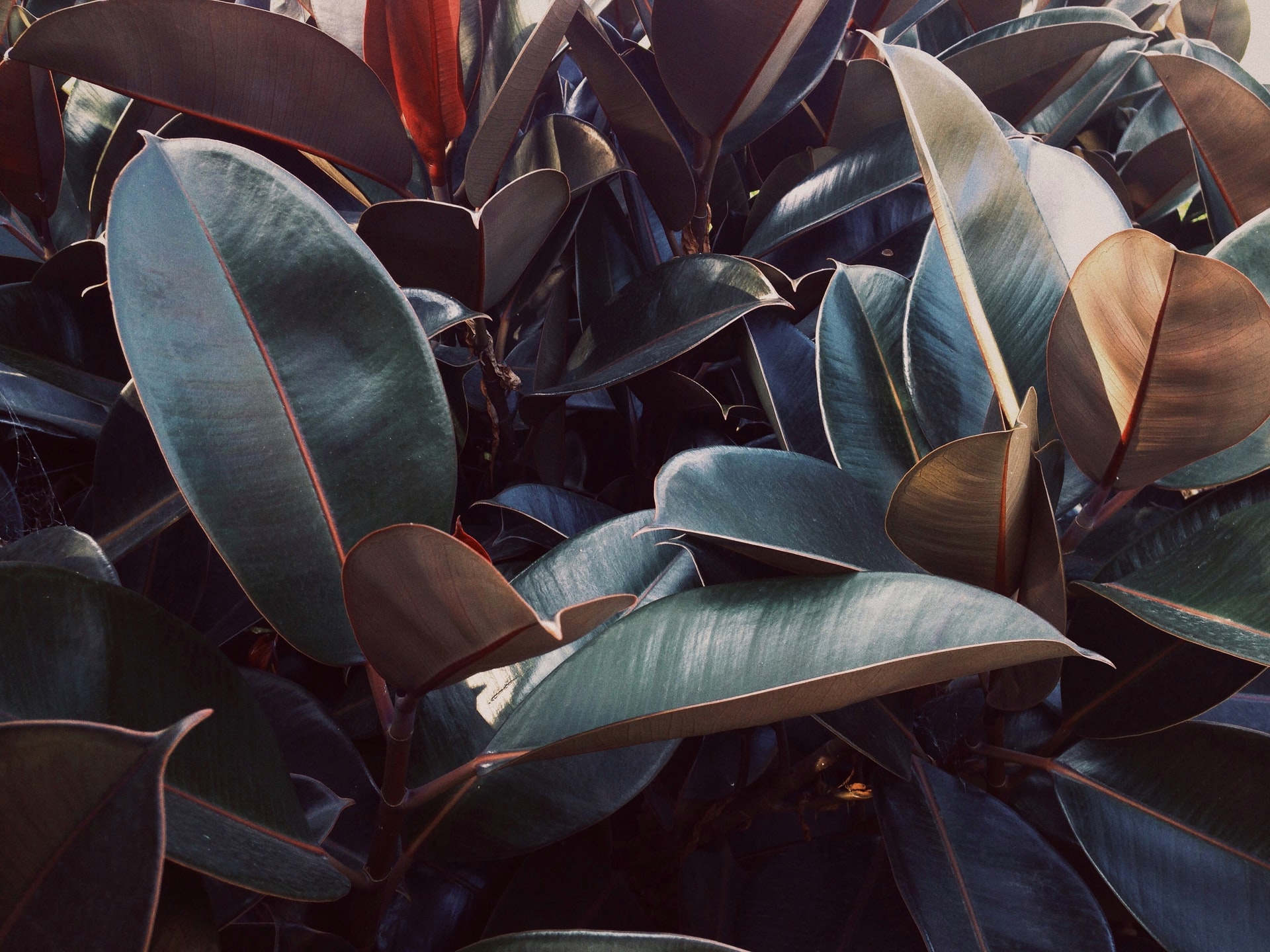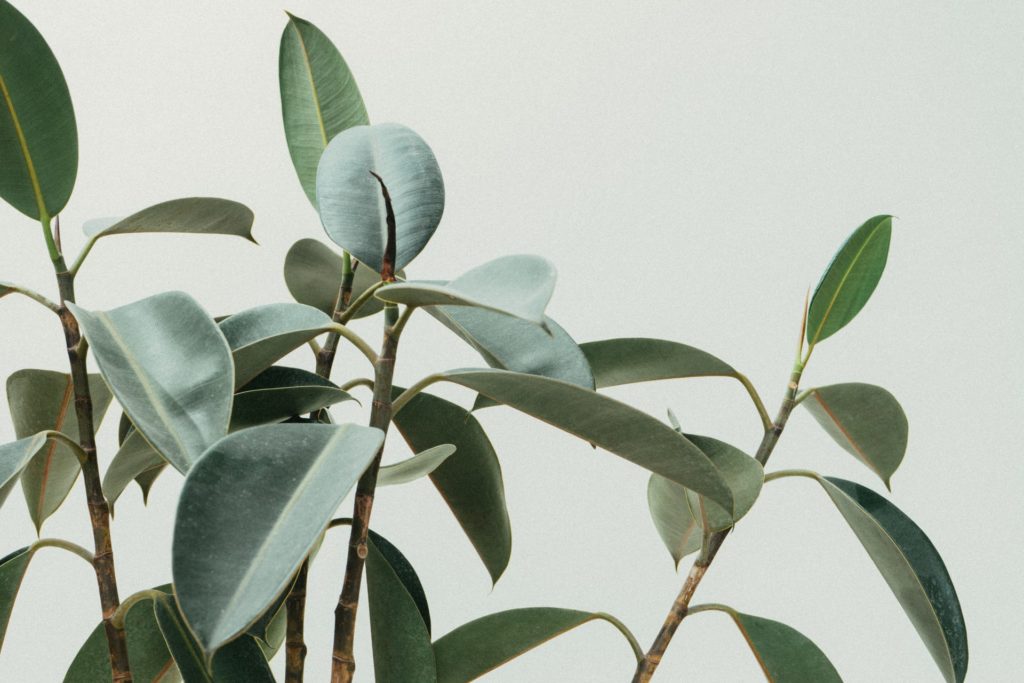
What is a Rubber Plant?
The rubber plant (Ficus elastica) is one of the most popular houseplants in the world because it is so easy to care for and tolerant of many different conditions. Rubber plants are part of the fig family, which also includes ficus trees. They are native to South America, but they can be found around the world in many different colors and shapes.
There are three primary varieties: Ficus elastica, Ficus benjamina, and Ficus lyrata. The first variety has glossy leaves that are dark green with light spots on them; while the other two have matte leaves that are dark green or silver-green.
How To Grow A Rubber Plant
Rubber plants are the perfect houseplant for those who don’t have much time to take care of their plants. They are low maintenance, low light, and do not require regular watering. These plants like warm temperatures, but they will tolerate cooler temperatures. and air-conditioned spaces.
This means you can leave them at home while you’re out for the day, and they’ll still be happy! They are so hardy you can even leave them on your desk at work or in a room with no windows, and they will survive!
There are many factors to consider when growing rubber plants indoors.
- The most important factor is the light and temperature requirements. Plants need a lot of light and heat, and if they don’t get enough they will stop growing or die.
- The second most important factor is the soil type. Soil that has a lot of peat moss and perlite added to it is best because it will hold water better than pure potting soil, which dries out quickly. Over watering the soil will weaken your plant and leave them vulnerable to pests, disease and maybe rot. The use of a well draining container and good soil can easily help contain this temptation.
- The third consideration is the size of the pot or potting container, as too small of a container can lead to root rot and death due to lack of space for roots to grow in.
- This plant has leaves that can remain nice and shiny if cleaned occasionally with soapy sponge and then pure plain water.
- The best ideal temperatures for your rubber plant are between 81 and 67 degrees.

How To Water Your Rubber Plant
Watering a rubber plant is an easy thing to do. You can water it with a water pitcher or by allowing the plant to dunk its leaves in the water.
The most important part of watering your rubber plant is to do so at the right time. Do not water your rubber plant in the morning, as this can result in root rot. Instead, try to water it around nightfall or in the late afternoon so that it has enough time to dry before morning.
How To Fertilize Your Rubber Plant
There are various fertilizers for rubber plants, but one of the most common fertilizers is the Espoma Organic Plant Food. The Espoma Organic Plant Food can be used to provide your plant with both nutrients and minerals, as well as help to combat pest insects that might attack your plant.
Some people prefer fertilizer pellets because they are easy to use and you can keep them in stock. However, if you want a liquid fertilizer then there are many options for you too.
We created this guide to show you how to fertilize your rubber plant at home.
Step 1: Purchase a balanced mix fertilizer from a reputable garden center or pet store. Follow the instructions on the package for mixing and dosage.
Step 2: Add the recommended dosage of fertilizer to water. Ensure that it is diluted correctly, as too much will burn your plant, and too little will not produce results.
Step 3: Pour the water-fertilizer mixture into a spray bottle and spritz away!
Try using organic fertilizer about once every month. Keep Off chemically based fertilizers. Since you’re indoors spraying chemicals on your plants can have bad effects on your health. Use only organic products to care for your rubber plants.

How To Repot A Rubber Plant
Rubber plants grow very heavy roots rather quickly and you should be ready to re-plant in a larger container. When a rubber plant needs to be repotted, one should keep in mind that it needs a lot of light. It is best to find a pot that is wider and shorter than the previous pot to accommodate for this need for more space. The soil should be completely dry before adding it into the pot.
Rubber plants need to be repotted every two years or so, depending on how large they grow. When repotting them, one should not take all the old soil out but instead only about half of it and replace with new soil. The rubber plant will need plenty of sun and water so make sure the new pot is placed in an area where it can get ample sun and watered often.
Benefits Of Growing a Rubber Plant
Are you searching for a carefree house plant that grows tall and can occupy a decent amount of space? The Rubber plant will be ideal for you. The plant does very good in just about any home condition and can provide years of indoor greenery if cared for properly.
- Owning a rubber plant provides you with many benefits, including being able to avoid messy houseplants and having more time on your hands!
- The first benefit is that they are easy to take care of. Rubber plants are known for their ability to grow in low light conditions, so they are perfect for those of you who have a busy lifestyle or live in an apartment with limited natural sunlight.
- The best aspect of rubber plants is the deep green and glossy foliage
- They also have the added benefit of being very resilient, so they can handle periods of neglect. This makes them perfect for those who want to use their time on things other than gardening.
More:
As your rubber plant gets really tall , it can become top heavy, use a stake to give extra support or just trim them in the spring.
Rubber plants have higher resistance to pests and diseases. Over watering might cause the leaves to look a little yellow. Just give it less water. More sunshine is good cure for loss of leaves that sometimes do occur. Once In a While, mealy bugs might show up, just wash them off with a mixture of castle soap and water. At your local nursery, you will come across large assortment of rubber plants. Just pick out the ones you like, because they all have same growing patterns and maintenance is the same across the board. Good luck on your selections; for soon you will have indoor greenery that will your friends green with envy.